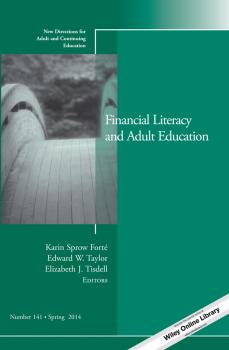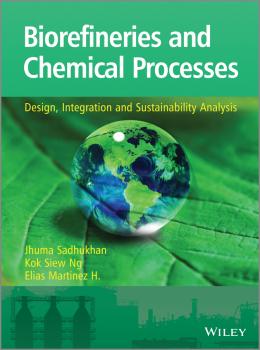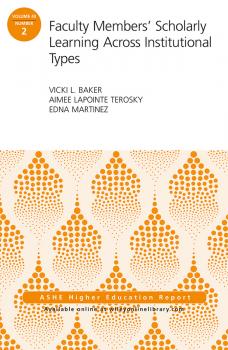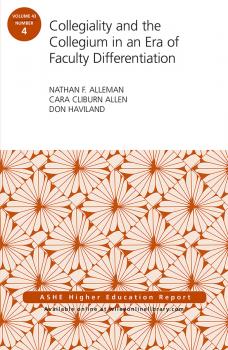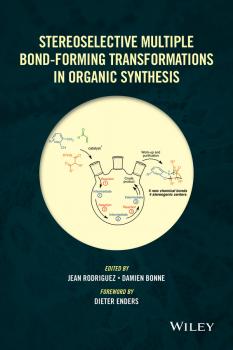Прочая образовательная литература
Различные книги в жанре Прочая образовательная литератураHandbook of LC-MS Bioanalysis. Best Practices, Experimental Protocols, and Regulations
Consolidates the information LC-MS bioanalytical scientists need to analyze small molecules and macromolecules The field of bioanalysis has advanced rapidly, propelled by new approaches for developing bioanalytical methods, new liquid chromatographic (LC) techniques, and new mass spectrometric (MS) instruments. Moreover, there are a host of guidelines and regulations designed to ensure the quality of bioanalytical results. Presenting the best practices, experimental protocols, and the latest understanding of regulations, this book offers a comprehensive review of LC-MS bioanalysis of small molecules and macromolecules. It not only addresses the needs of bioanalytical scientists working on routine projects, but also explores advanced and emerging technologies such as high-resolution mass spectrometry and dried blood spot microsampling. Handbook of LC-MS Bioanalysis features contributions from an international team of leading bioanalytical scientists. Their contributions reflect a review of the latest findings, practices, and regulations as well as their own firsthand analytical laboratory experience. The book thoroughly examines: Fundamentals of LC-MS bioanalysis in drug discovery, drug development, and therapeutic drug monitoring The current understanding of regulations governing LC-MS bioanalysis Best practices and detailed technical instructions for LC-MS bioanalysis method development, validation, and stability assessment of analyte(s) of interest Experimental guidelines and protocols for quantitative LC-MS bioanalysis of challenging molecules, including pro-drugs, acyl glucuronides, N-oxides, reactive compounds, and photosensitive and autooxidative compounds With its focus on current bioanalytical practice, Handbook of LC-MS Bioanalysis enables bioanalytical scientists to develop and validate robust LC-MS assay methods, all in compliance with current regulations and standards.
The Chemistry of Contrast Agents in Medical Magnetic Resonance Imaging
Magnetic Resonance Imaging (MRI) is one of the most important tools in clinical diagnostics and biomedical research. The number of MRI scanners operating around the world is estimated to be approximately 20,000, and the development of contrast agents, currently used in about a third of the 50 million clinical MRI examinations performed every year, has largely contributed to this significant achievement. This completely revised and extended second edition: Includes new chapters on targeted, responsive, PARACEST and nanoparticle MRI contrast agents. Covers the basic chemistries, MR physics and the most important techniques used by chemists in the characterization of MRI agents from every angle from synthesis to safety considerations. Is written for all of those involved in the development and application of contrast agents in MRI. Presented in colour, it provides readers with true representation and easy interpretation of the images. A word from the Authors: Twelve years after the first edition published, we are convinced that the chemistry of MRI agents has a bright future. By assembling all important information on the design principles and functioning of magnetic resonance imaging probes, this book intends to be a useful tool for both experts and newcomers in the field. We hope that it helps inspire further work in order to create more efficient and specific imaging probes that will allow materializing the dream of seeing even deeper and better inside the living organisms. Reviews of the First Edition: «…attempts, for the first time, to review the whole spectrum of involved chemical disciplines in this technique…»—Journal of the American Chemical Society «…well balanced in its scope and attention to detail…a valuable addition to the library of MR scientists…»—NMR in Biomedicine
Management of the Effects of Coastal Storms. Policy, Scientific and Historical Perspectives
A large part of the world’s coastlines consists of sandy beaches and dunes that may undergo dramatic changes during storms. Extreme storm events in some cases dominate the erosion history of the coastline and may have dramatic impacts on densely populated coastal areas. Policy, research and historical background are essential elements that need to be interconnected for effective coastal planning and management. This book discusses this framework, with Chapter 1 providing an insight into policy settings and science-policy interactions in the area of coastal risks related to storms and flooding, and integrated coastal zone management. This is followed by a review of the current understanding of the processes generating extreme coastal events, the morphological evolution of coastlines during and after the events, and the methods for monitoring the process as it occurs or for post-event appraisal. The final chapter discusses the importance of historical approaches regarding coastal threats, taking the Xynthia storm as an example.
Financial Literacy and Adult Education. New Directions for Adult and Continuing Education, Number 141
Many adults attend financial education classes to help them make more informed financial decisions, based on their knowledge of their financial situation available cash or funds planned expenditures. This volume brings together scholars from the fields of adult education and financial literacy and covers topics that reveal the interrelatedness of the two fields. They show how concepts and knowledge about adult education can be utilized in and illuminate financial education, and they offer insights about how financial education, as an eminently practical subject, shows adults learning and putting their new knowledge into action. This is the 141st volume of this Jossey-Bass series. Noted for its depth of coverage, it explores issues of common interest to instructors, administrators, counselors, and policymakers in a broad range of adult and continuing education settings, such as colleges and universities, extension programs, businesses, libraries, and museums.
Biorefineries and Chemical Processes. Design, Integration and Sustainability Analysis
As the range of feedstocks, process technologies and products expand, biorefineries will become increasingly complex manufacturing systems. Biorefineries and Chemical Processes: Design, Integration and Sustainability Analysis presents process modelling and integration, and whole system life cycle analysis tools for the synthesis, design, operation and sustainable development of biorefinery and chemical processes. Topics covered include: Introduction: An introduction to the concept and development of biorefineries. Tools: Included here are the methods for detailed economic and environmental impact analyses; combined economic value and environmental impact analysis; life cycle assessment (LCA); multi-criteria analysis; heat integration and utility system design; mathematical programming based optimization and genetic algorithms. Process synthesis and design: Focuses on modern unit operations and innovative process flowsheets. Discusses thermochemical and biochemical processing of biomass, production of chemicals and polymers from biomass, and processes for carbon dioxide capture. Biorefinery systems: Presents biorefinery process synthesis using whole system analysis. Discusses bio-oil and algae biorefineries, integrated fuel cells and renewables, and heterogeneous catalytic reactors. Companion website: Four case studies, additional exercises and examples are available online, together with three supplementary chapters which address waste and emission minimization, energy storage and control systems, and the optimization and reuse of water. This textbook is designed to bridge a gap between engineering design and sustainability assessment, for advanced students and practicing process designers and engineers.
Faculty Members' Scholarly Learning Across Institutional Types. ASHE Higher Education Report
Explore an important, yet understudied concept: faculty scholarly learning. Taking a broad view, this volume explains how scholarly learning is defined and conceptualized by scholars. The authors synthesize the recent literature and organize the findings according to Boyer?s four forms of scholarship (discovery, teaching, engagement, and integration). They then offer a counternarrative to faculty scholarly learning and the ways in which it is enacted and supported. Recommendations for developing, supporting, and evaluating faculty scholarly learning are also presented. This volume answers: What does scholarly learning look like at different types of institutions? What contexts and/or supports hinder or help faculty members? scholarly learning at the different institutional types? What challenges are noted in the extant literature on faculty work around further study or better understanding of faculty members? scholarly learning across institutional types? This is the second issue of the 43rd volume of the Jossey-Bass series ASHE Higher Education Report. Each monograph is the definitive analysis of a tough higher education issue, based on thorough research of pertinent literature and institutional experiences. Topics are identified by a national survey. Noted practitioners and scholars are then commissioned to write the reports, with experts providing critical reviews of each manuscript before publication.
Collegiality and the Collegium in an Era of Faculty Differentiation. ASHE Higher Education Report
Dramatic shifts in the demographic and labor diversity of American faculty have pressed institutions and the profession to clarify who the real faculty are, from tenured to adjunct faculty. Efforts to equalize respect, resources, and treatment, although laudable, may be missing a vital aspect of the conversation: the role of collegiality and the collegium. Collegiality, the cultural, structural, and behavioral components, and the collegium, or the shared identity collegiality serves, are ancient concepts that raise timely questions for the faculty profession: What is it about the history of the professoriate in America that has rendered the collegium inadequate and yet so important in an age of differentiated labor? How might a renewed vision for collegiality bring clarity to the question of which faculty should be regarded as experts? How can we adapt and leverage these important concepts for a professoriate that is increasingly diverse by demographics and employment category in ways that result in a more inclusive and robust profession? Engaging in these questions through the extant literature will call readers into a compelling new conversation about the needs of and possibilities for the professoriate. This is the fourth issue of the 43rd volume of the Jossey-Bass series ASHE Higher Education Report. Each monograph is the definitive analysis of a tough higher education issue, based on thorough research of pertinent literature and institutional experiences. Topics are identified by a national survey. Noted practitioners and scholars are then commissioned to write the reports, with experts providing critical reviews of each manuscript before publication.
Stereoselective Multiple Bond-Forming Transformations in Organic Synthesis
Combining the important research topic of multiple bond-forming transformations with green chemistry, this book helps chemists identify recent sustainable stereoselective synthetic sequences. • Combines the important research topic of multiple bond-forming transformations with green chemistry and sustainable development • Offers a valuable resource for preparing compounds with multiple stereogenic centers, an important field for synthetic chemists • Organizes chapters by molecular structure of final products, making for a handbook-style resource • Discusses applications of the synthesis of natural products and of drug intermediates • Brings together otherwise-scattered information about a number of key, efficient chemical reactions
Bioinformatics Challenges at the Interface of Biology and Computer Science. Mind the Gap
This innovative book provides a completely fresh exploration of bioinformatics, investigating its complex interrelationship with biology and computer science. It approaches bioinformatics from a unique perspective, highlighting interdisciplinary gaps that often trap the unwary. The book considers how the need for biological databases drove the evolution of bioinformatics; it reviews bioinformatics basics (including database formats, data-types and current analysis methods), and examines key topics in computer science (including data-structures, identifiers and algorithms), reflecting on their use and abuse in bioinformatics. Bringing these disciplines together, this book is an essential read for those who wish to better understand the challenges for bioinformatics at the interface of biology and computer science, and how to bridge the gaps. It will be an invaluable resource for advanced undergraduate and postgraduate students, and for lecturers, researchers and professionals with an interest in this fascinating, fast-moving discipline and the knotty problems that surround it.
Allies for Inclusion: Disability and Equity in Higher Education. ASHE Volume 39, Number 5
Here is an overview of students with disabilities in postsecondary institutions and the importance of allies in their lives. It is a call to action for faculty, staff, and administrators in all facets of higher education, and emphasizes the shared responsibility toward students with disabilities and toward creating meaningful change. This monograph begins with a look into the future of disability education. How will students create their own identities? Will there be a need for disability accommodations or will a universally designed world eliminate that current necessity? It also looks at the past, with discussions of disability legislation such as the ADA of 1990, the impact of Supreme Court decisions, descriptions of college students with disabilities, and the paradigm shift from the medical “deficit” model of disability to one that focuses on the individual’s lived experience as a social construct. Drawing on theoretical frameworks in multiple disciplines, disability identity development is explained, ally development is defined, and disability services are explored. The monograph ends with a discussion of where disability education is now and how faculty, staff, and administrators will continue to be allies of inclusion for students in the years to come. This is the 5th issue of the 39th volume of the Jossey-Bass series ASHE Higher Education Report. Each monograph is the definitive analysis of a tough higher education issue, based on thorough research of pertinent literature and institutional experiences. Topics are identified by a national survey. Noted practitioners and scholars are then commissioned to write the reports, with experts providing critical reviews of each manuscript before publication.



